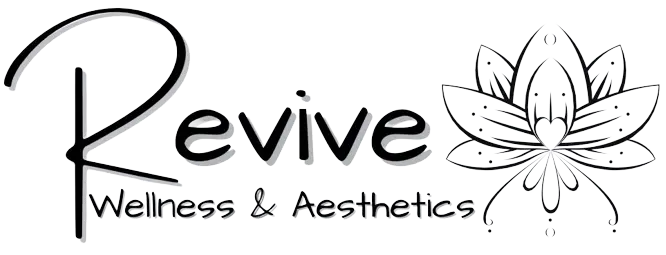A Complementary Approach to Managing Chronic Pain
Living with chronic pain can be incredibly challenging and often feels overwhelming. It’s a condition that affects millions of people worldwide, impacting daily life and mental well-being. As an integrative clinician dedicated to providing life-changing care, I believe in a holistic approach that considers the whole person, not just the symptoms.
Understanding Chronic Pain
Chronic pain is defined as pain that persists for weeks, months, or even years beyond the usual recovery period. It can result from various conditions, such as arthritis, fibromyalgia, neuropathy, and past injuries. Chronic pain is complex and involves both physical and emotional factors, requiring a comprehensive approach for effective management.
Nutrition As a Tool
What we eat can play a significant role in managing chronic pain. A diet rich in anti-inflammatory foods can help reduce inflammation and alleviate pain.
- Anti-Inflammatory Foods:
- Omega-3 Fatty Acids: Found in fatty fish like salmon, sardines, and mackerel, omega-3s are known to reduce inflammation and pain.
- Fruits and Vegetables: Leafy greens, berries, cherries, and cruciferous vegetables are high in antioxidants and anti-inflammatory compounds.
- Nuts and Seeds: Almonds, walnuts, chia seeds, and flaxseeds provide healthy fats and antioxidants that support overall health.
- Whole Grains: Opt for whole grains like quinoa, brown rice, and oats instead of refined grains to maintain stable blood sugar levels and reduce inflammation.
- Foods to Avoid:
- Processed Foods: Limit consumption of processed foods high in sugar and unhealthy fats, which can increase inflammation.
- Refined Carbohydrates: Avoid white bread, pastries, and other refined carbs that can spike blood sugar and contribute to inflammation.
- Hydration:
- Staying well-hydrated is essential for overall health and can help alleviate joint stiffness and muscle cramps. Aim to drink plenty of water throughout the day.
Stress Management Techniques
Stress can exacerbate chronic pain by increasing muscle tension and inflammation. Incorporating stress management techniques into your routine can help reduce pain and improve mental well-being.
- Mindfulness and Meditation:
- Mindfulness practices, such as meditation and deep breathing exercises, can help calm the mind and body, reducing stress and pain perception. Even a few minutes of daily meditation can make a significant difference.
- Yoga and Gentle Movement:
- Engaging in yoga or gentle stretching exercises can improve flexibility, reduce muscle tension, and enhance relaxation. These activities promote mindfulness and help connect the mind and body.
- Cognitive Behavioral Therapy (CBT):
- CBT is a type of therapy that helps change negative thought patterns and behaviors, improving coping skills and reducing the emotional impact of chronic pain.
- Biofeedback:
- Biofeedback involves using electronic devices to monitor bodily functions like heart rate and muscle tension, teaching individuals to control physiological responses to stress and pain.
Lifestyle Modifications
Making certain lifestyle changes can support pain management and improve quality of life.
- Regular Exercise:
- Engage in regular physical activity that is appropriate for your condition. Low-impact exercises like swimming, walking, or cycling can improve cardiovascular health, increase endorphins, and reduce pain.
- Sleep Hygiene:
- Prioritizing quality sleep is essential for managing chronic pain. Establish a consistent sleep schedule and create a restful environment to promote restorative sleep.
- Social Support:
- Connect with friends, family, or support groups to share experiences and receive emotional support. Social connections can improve mental well-being and provide a sense of community.
Integrative Therapies
Incorporating complementary therapies can enhance traditional pain management strategies.
- Acupuncture:
- Acupuncture involves inserting thin needles into specific points on the body to relieve pain and promote healing. It can be effective for various types of chronic pain.
- Massage Therapy:
- Regular massage therapy can help reduce muscle tension, improve circulation, and promote relaxation, alleviating pain and stress.
- Mindfulness Practice:
- Mindfulness meditation involves focusing on the present moment and accepting it without judgment. Regular mindfulness practice can reduce stress, anxiety, and the perception of pain by altering the brain’s response to pain signals.
- Cryotherapy:
- Cryotherapy involves exposing the body to extremely cold temperatures for short periods. It can reduce inflammation, numb nerve irritation, and relieve pain, making it useful for conditions like arthritis and muscle pain.
- Hyperbaric Oxygen Therapy:
- HBOT involves breathing pure oxygen in a pressurized chamber, which can increase oxygen levels in the blood and promote healing in damaged tissues that lead to chronic pain.
- Red Light Therapy:
- Red Light Therapy (RLT) uses low-level wavelengths of red light to penetrate the skin and promote healing. It can reduce inflammation, increase circulation, and stimulate cellular repair. RLT is effective for treating muscle and joint pain, as well as skin conditions related to chronic pain, like psoriasis or eczema
Putting It All Together
Managing chronic pain requires a comprehensive and integrative approach that addresses both physical and emotional factors. By incorporating nutrition, stress management, lifestyle modifications, and complementary therapies, you can take proactive steps toward reducing pain and improving overall well-being.
If you’re living with chronic pain and are interested in exploring integrative treatment options, please schedule a consultation with us today to discuss personalized strategies that can support your journey to better health.

